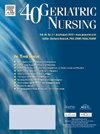神经调节干预联合机器人辅助步态训练对脑卒中患者下肢运动功能的影响:网络荟萃分析
IF 2.4
3区 医学
Q3 GERIATRICS & GERONTOLOGY
引用次数: 0
摘要
背景神经调节干预与机器人辅助步态训练(RAGT)相结合以增强脑卒中患者下肢运动功能恢复仍存在争议。目的探讨神经调节联合RAGT对脑卒中后下肢运动功能障碍患者的影响,并分析最佳联合治疗策略。方法系统检索PubMed、Web of Science、Cochrane Library、Embase、CNKI、VIP、万方、SinoMed等数据库。两名独立研究人员进行了文献筛选、数据提取和偏倚评估。数据整合后,采用Cochrane偏倚风险工具和PEDro量表评价研究质量。采用RevMan 5.4.1和Stata 18.0软件对数据进行分析,采用GRADE系统评价证据质量。结果用95%置信区间(CI)的均值差(MD)表示。结果纳入445例脑卒中患者的6项研究。meta分析显示,神经调节(针刺、tDCS、rTMS)联合RAGT与单独RAGT相比,可显著改善FMA-LE评分、BBS评分和6MWT距离,而FAC评分无显著差异。SUCRA结果显示:rTMS+RAGT (98.6%) >;针灸+RAGT (67.5%) >;RAGT (23.0%) >;Dcs + ragt (10.9%);针灸+RAGT (89.1%) >;rTMS+RAGT (72.0%) >;tDCS+RAGT (34.3%);Ragt (4.6%);针灸+RAGT (83.4%) >;rTMS+RAGT (83.2%) >;RAGT (26.0%) >;tDCS+RAGT(7.4%)。结论神经调节干预(rTMS、tDCS、针刺)联合RAGT可显著增强脑卒中患者下肢运动功能。针刺或rTMS联合RAGT可能是最佳策略。本文章由计算机程序翻译,如有差异,请以英文原文为准。
Effects of neuromodulation interventions combined with robot-assisted gait training on lower extremity motor function in stroke patients: A network meta-analysis
Background
The combination of neuromodulation interventions with robot-assisted gait training (RAGT)
for enhancing lower limb motor function recovery in stroke patients remains contentious.
Objective
This study aims to investigate the effects of neuromodulation combined with RAGT on patients with lower limb motor dysfunction following a stroke and to analyze the optimal combined treatment strategies.
Methods
A systematic search was conducted across PubMed, Web of Science, Cochrane Library, Embase, CNKI, VIP, Wanfang, and SinoMed databases. Two independent researchers performed literature screening, data extraction, and bias assessment. After data integration, the Cochrane risk of bias tool and PEDro scale were used to evaluate study quality. Data were analyzed using RevMan 5.4.1 and Stata 18.0 software, and the GRADE system was employed to assess evidence quality. Results are expressed as mean differences (MD) with 95 % confidence intervals (CI).
Results
Eleven studies involving 445 stroke patients were included. Meta-analysis indicated that neuromodulation (acupuncture, tDCS, rTMS) combined with RAGT significantly improved FMA-LE scores ,BBS scores ,and 6MWT distances compared to RAGT alone, with no significant difference in FAC scores .In the order of FMA-LE , FAC , and BBS ,SUCRA results show: rTMS+RAGT (98.6 %) > acupuncture+RAGT (67.5 %) > RAGT (23.0 %) > DCS+RAGT (10.9 %); acupuncture+RAGT (89.1 %) > rTMS+RAGT (72.0 %) > tDCS+RAGT (34.3 %) > RAGT (4.6 %); acupuncture+RAGT (83.4 %) > rTMS+RAGT (83.2 %) > RAGT (26.0 %) > tDCS+RAGT (7.4 %).
Conclusion
Neuromodulation interventions (rTMS, tDCS, acupuncture) combined with RAGT can significantly enhance lower limb motor function in stroke patients. Acupuncture or rTMS combined with RAGT may represent the optimal strategy.
求助全文
通过发布文献求助,成功后即可免费获取论文全文。
去求助
来源期刊

Geriatric Nursing
医学-护理
CiteScore
3.80
自引率
7.40%
发文量
257
审稿时长
>12 weeks
期刊介绍:
Geriatric Nursing is a comprehensive source for clinical information and management advice relating to the care of older adults. The journal''s peer-reviewed articles report the latest developments in the management of acute and chronic disorders and provide practical advice on care of older adults across the long term continuum. Geriatric Nursing addresses current issues related to drugs, advance directives, staff development and management, legal issues, client and caregiver education, infection control, and other topics. The journal is written specifically for nurses and nurse practitioners who work with older adults in any care setting.
 求助内容:
求助内容: 应助结果提醒方式:
应助结果提醒方式:


